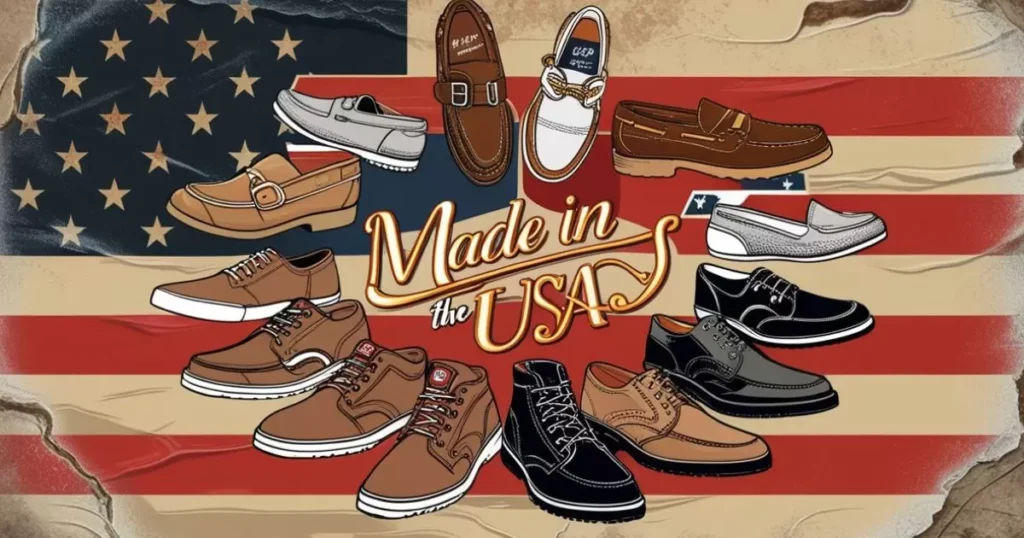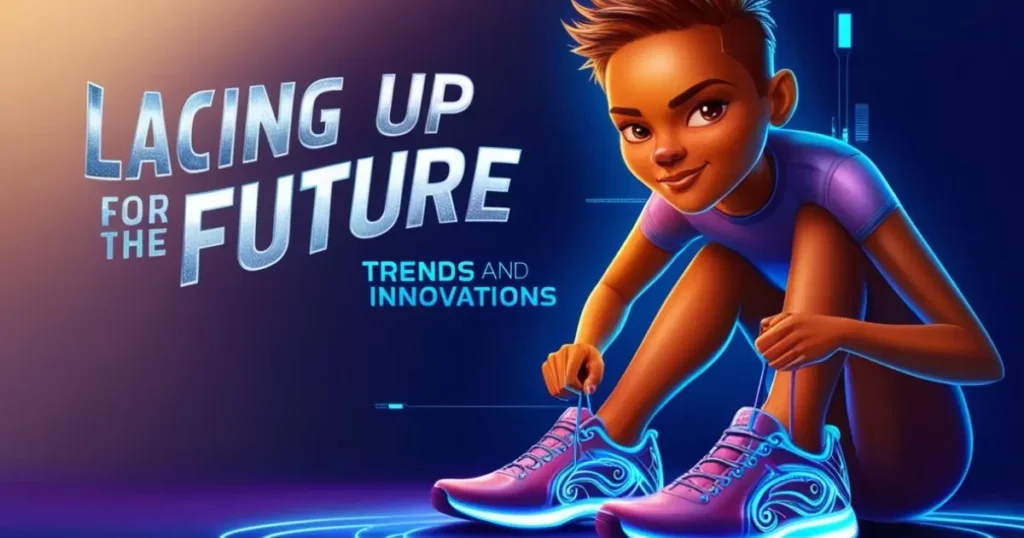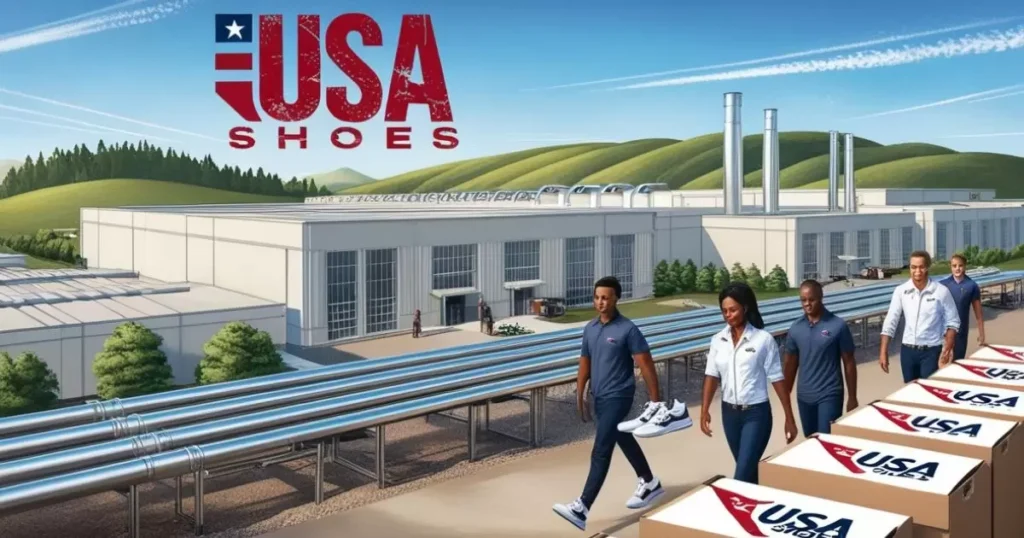In a world where globalization has shifted much of manufacturing overseas, the American shoe industry stands as a testament to craftsmanship, innovation, and resilience. From the bustling factories of New England to the tech-savvy startups of Silicon Valley, US shoe manufacturers continue to leave their mark on the global footwear landscape. This comprehensive look at the industry will take you on a journey through time, introduce you to the key players, and explore the challenges and opportunities that lie ahead for American-made shoes.
The Sole of America: A Brief History
The story of American shoe manufacturing is as old as the nation itself. In colonial times, skilled cobblers crafted shoes by hand, each pair a unique work of art. As the Industrial Revolution swept across the country, it brought with it mechanization that would forever change the face of shoe production.
Key milestones in US shoe manufacturing:
- 1750s: First shoe factory established in Massachusetts
- 1845: Elias Howe invents the sewing machine, revolutionizing shoe production
- 1883: Jan Ernst Matzeliger patents the “lasting machine,” dramatically increasing output
- 1920s: US becomes world’s largest shoe producer and exporter
- 1960s-1980s: Offshoring begins, challenging domestic production
- 2000s-Present: Resurgence of interest in American-made goods
The industry’s journey hasn’t always been smooth, but it’s this rich history that gives American-made shoes their unique character and appeal.
Walking Tall: The Current State of US Shoe Manufacturing
Today, the US shoe manufacturing industry is a mix of heritage brands, innovative startups, and global powerhouses. While it may not dominate global production like it once did, it remains a significant player in the domestic market and a leader in high-end and specialized footwear.
Market size and economic impact:
- US footwear market value: $86.1 billion (2023)
- Number of US shoe manufacturers: Approximately 250
- Employment in shoe manufacturing: Over 12,000 workers
- Annual revenue: $2.1 billion (2023)
“American-made shoes are more than just products; they’re a symbol of quality, craftsmanship, and innovation.” – Matt Priest, President and CEO of the Footwear Distributors and Retailers of America (FDRA)
Challenges and Opportunities
The industry faces several hurdles, including:
- High labor costs compared to overseas production
- Shortage of skilled workers in traditional manufacturing areas
- Competition from low-cost imports
- Navigating complex trade policies and tariffs
However, these challenges have also spawned opportunities:
- Focus on high-quality, premium products
- Adoption of advanced manufacturing technologies
- Emphasis on sustainability and ethical production
- Leveraging “Made in USA” appeal to consumers
Made in the USA: Top American Shoe Brands

New Balance: Balancing Tradition and Innovation
Founded in 1906, New Balance has become synonymous with American-made athletic footwear. The company proudly manufactures or assembles more than 4 million pairs of shoes annually in the USA.
Key facts:
- Headquarters: Boston, Massachusetts
- US Manufacturing locations: 5 factories in New England
- Signature product: 990 series running shoes
- Notable innovation: 3D-printed midsoles
New Balance’s commitment to domestic manufacturing has earned it a loyal following and even a contract to supply footwear to the US military.
Red Wing Shoes: Rugged Reliability Since 1905
Red Wing Shoes has been crafting durable work boots in Red Wing, Minnesota, for over a century. Their boots are favored by construction workers, firefighters, and fashion enthusiasts alike.
Iconic products:
- Iron Ranger boot
- Classic Moc boot
- Weekender Chukka
Red Wing’s dedication to quality is evident in their use of premium leathers and Goodyear welt construction, ensuring their boots can be resoled and worn for years.
Allen Edmonds: Crafting Luxury Dress Shoes
Since 1922, Allen Edmonds has been producing high-end dress shoes in Port Washington, Wisconsin. Their shoes are a staple in boardrooms and have even graced the feet of US presidents.
Manufacturing process highlights:
- 212 steps in crafting each pair of shoes
- Use of a 360-degree Goodyear welted construction
- Offer recrafting services to extend shoe life
Allen Edmonds’ commitment to quality and traditional craftsmanship has helped them weather the storm of offshoring that affected many of their competitors.
Thorogood: Work Boots with American Grit
A division of the Weinbrenner Shoe Company, Thorogood has been producing work boots in Wisconsin since 1892. Their boots are favored by tradespeople for their durability and comfort.
Popular models:
- American Heritage Moc Toe
- 1957 Series
- Crosstrex Series (hiking boots)
Thorogood’s “Job-Fitted” philosophy ensures their boots are designed to meet the specific needs of various professions.
Danner: Adventure-Ready Footwear
Founded in 1932 in Chippewa Falls, Wisconsin, Danner has become a go-to brand for outdoor enthusiasts and military personnel. While some production has moved overseas, they maintain a significant manufacturing presence in Portland, Oregon.
Notable achievements:
- Introduced the first waterproof hiking boot in 1979
- Supplies boots to the US Marine Corps
- Collaborations with fashion brands like Tanner Goods and Filson
Danner’s blend of traditional craftsmanship and modern materials has earned them a reputation for producing some of the best hiking and work boots in the market.
Niche Players: Specialty Shoe Manufacturers
Alden: Handcrafted Heritage Since 1884
Based in Middleborough, Massachusetts, Alden is America’s only original New England dress shoe and boot maker. They’re renowned for their shell cordovan leather shoes and boots.
Signature styles:
- Indy Boot (made famous by Indiana Jones)
- Tassel Loafer
- Plain Toe Blucher
Alden’s commitment to traditional manufacturing methods and high-quality materials has made them a favorite among shoe enthusiasts worldwide.
Rancourt & Co.: Maine’s Moccasin Masters
Founded in 2009, Rancourt & Co. draws on generations of shoemaking expertise in Lewiston, Maine. They specialize in handsewn moccasins and loafers.
Key offerings:
- Custom-made shoes
- Collaborations with brands like Brooks Brothers and Ralph Lauren
- Direct-to-consumer model for premium handcrafted shoes
Rancourt’s blend of traditional techniques and modern business practices represents the future of American shoe manufacturing.
SAS (San Antonio Shoemakers): Comfort-Focused Craftsmanship
Founded in 1976, SAS produces comfort-oriented shoes in San Antonio, Texas. They’re known for their attention to fit and use of high-quality materials.
Manufacturing highlights:
- Use of SuperSoft® lightweight outsoles
- Handcrafted details like hand-lacing and hand-brushing
- Offer hard-to-find sizes and widths
SAS’s focus on comfort and fit has earned them a loyal customer base, particularly among those with foot health concerns.
Quoddy: Customized Handsewn Footwear
Based in Lewiston, Maine, Quoddy continues the tradition of handsewn moccasin construction. They offer a high degree of customization, allowing customers to design their perfect pair of shoes.
Customization options:
- Choice of leather type and color
- Sole material selection
- Hardware and lace options
Quoddy’s made-to-order model and focus on traditional craftsmanship represent a unique niche in the American shoe market.
Innovation Meets Tradition: Tech-Forward US Shoe Companies
Allbirds: Sustainable Sneakers for the Eco-Conscious
Founded in 2014, Allbirds has quickly become a major player in the sustainable footwear market. While their production isn’t entirely US-based, their San Francisco headquarters drives innovation in eco-friendly materials and design.
Innovative materials:
- Merino wool uppers
- Sugarcane-based EVA foam soles
- Eucalyptus tree fiber fabrics
Allbirds’ commitment to sustainability and transparent practices has resonated with environmentally conscious consumers.
Atoms: Perfecting the Everyday Sneaker
New York-based Atoms launched in 2018 with a focus on creating the perfect everyday sneaker. Their innovative approach includes offering quarter sizes for a better fit.
Unique features:
- Copper-lined insoles for odor control
- Elastic laces for slip-on convenience
- Ability to order different sizes for left and right feet
Atoms’ tech-driven approach to fit and comfort represents a new direction in shoe manufacturing.
Helm Boots: Blending Old-World Techniques with Modern Style
Founded in 2009 in Austin, Texas, Helm Boots combines traditional bootmaking techniques with contemporary design. They produce their boots in Maine, using a mix of old-world craftsmanship and modern machinery.
Notable aspects:
- Use of Blake Rapid Stitch construction
- Collaboration with local artists for unique designs
- Small-batch production for quality control
Helm’s approach demonstrates how traditional manufacturing can be updated for the modern market.
The Athletic Giants: US-Based Global Powerhouses

Nike: Just Doing It Since 1964
While much of Nike’s production occurs overseas, their Beaverton, Oregon headquarters remains the heart of their design and innovation efforts. Nike’s impact on American shoe manufacturing and global shoe culture is undeniable.
Key innovations:
- Air cushioning technology
- Flyknit uppers
- Adaptive lacing systems
Nike’s ability to blend performance, style, and marketing has made them a dominant force in the global footwear market.
Under Armour: Performance-Driven Innovation
Founded in 1996 in Baltimore, Maryland, Under Armour has quickly become a major player in athletic footwear. While most production occurs overseas, their US-based innovation centers drive their product development.
Technological advancements:
- HOVR™ foam cushioning
- UA MapMyRun™ integration for performance tracking
- 3D-printed performance trainer prototypes
Under Armour’s tech-forward approach to athletic footwear represents the cutting edge of American shoe design.
Skechers: Comfort for the Masses
Based in Manhattan Beach, California, Skechers has grown to become the third-largest athletic footwear brand in the US. While most production occurs overseas, their US operations drive design and marketing efforts.
Popular technologies:
- Air-Cooled Memory Foam insoles
- Arch Fit® support system
- Hyper Burst™ cushioning
Skechers’ focus on affordable comfort has made them a major player in the casual and athletic footwear markets.
Stepping Up: Challenges Facing US Shoe Manufacturers
American shoe manufacturers face several significant challenges:
- Labor costs: US labor costs are significantly higher than in many overseas manufacturing hubs.
- Skilled workforce shortages: As older craftsmen retire, finding skilled replacements can be difficult.
- Competition from overseas: Low-cost imports continue to dominate the mass market.
- Navigating tariffs and trade policies: Changing trade landscapes can impact material costs and export opportunities.
Despite these challenges, many US manufacturers are finding ways to thrive:
- Focusing on premium products where higher labor costs can be justified
- Investing in training programs to develop skilled workers
- Leveraging advanced manufacturing technologies to increase efficiency
- Emphasizing the quality and ethical production of American-made goods
Lacing Up for the Future: Trends and Innovations

The future of US shoe manufacturing looks bright, with several exciting trends emerging:
3D-Printed Shoes and Custom Fit Technology
Companies like Adidas (with their Futurecraft 4D line) and New Balance are exploring 3D printing for midsoles, allowing for customized cushioning and support. This technology could revolutionize mass customization in footwear.
Sustainable Materials and Eco-Friendly Production
Brands are increasingly using recycled and sustainable materials:
- Recycled ocean plastics for uppers
- Algae-based foams for cushioning
- Plant-based leather alternatives
This trend aligns with growing consumer demand for environmentally responsible products.
Direct-to-Consumer Models and Personalization
Many newer brands are bypassing traditional retail channels to offer personalized products directly to consumers. This model allows for:
- Greater customization options
- More competitive pricing
- Closer relationships with customers
As technology advances, we can expect to see even more innovations in fit, materials, and manufacturing processes.
Walking the Walk: Supporting American-Made Footwear
Choosing American-made shoes offers several benefits:
- Quality: Many US manufacturers focus on high-quality, durable products.
- Ethical production: US labor laws ensure fair working conditions.
- Environmental impact: Shorter shipping distances can reduce carbon footprint.
- Economic support: Buying American-made products supports local jobs and communities.
To identify authentic American-made footwear:
- Look for “Made in USA” labels
- Check the brand’s website for manufacturing information
- Be aware that “Assembled in USA” may mean some components are foreign-made
- Research the brand’s history and manufacturing practices
“When you buy American-made shoes, you’re not just getting a product; you’re investing in a legacy of quality and craftsmanship.” – Mike Rancourt, CEO of Rancourt & Co.
Conclusion: The Enduring Footprint of US Shoe Manufacturing
The American shoe industry has weathered many storms, from the Industrial Revolution to the rise of global competition. Today, it stands as a symbol of quality, innovation, and resilience. While mass-market production may have largely moved overseas, US manufacturers have found strength in specialization, craftsmanship, and technological innovation.
As consumers become more conscious of the origin and impact of their purchases, American-made shoes are well-positioned to meet the demand for quality, sustainability, and ethical production. The industry’s ability to adapt to changing markets while maintaining a commitment to excellence ensures that US shoe manufacturers will continue to leave their mark on the global stage.
Whether you’re lacing up a pair of hand-crafted dress shoes, slipping on some eco-friendly sneakers, or pulling on rugged work boots, remember that American-made footwear represents more than just a product—it’s a step into a rich history and a stride towards a innovative future.
Frequently Asked Questions
Q: Which shoe brands are still manufactured in the USA?
A: Several brands still manufacture shoes in the USA, including New Balance, Red Wing, Allen Edmonds, Danner, and Thorogood.
Q: Why are American-made shoes often more expensive?
A: American-made shoes tend to be pricier due to higher labor costs, stricter regulations, and a focus on premium materials and craftsmanship.
Q: How can I identify if a shoe is truly made in the USA?
A: Look for “Made in USA” labels, check the brand’s website for manufacturing information, and be aware that “Assembled in USA” may mean some components are foreign-made.
Q: Are there any athletic shoe manufacturers in the USA?
A: Yes, New Balance is the largest athletic shoe manufacturer in the USA, producing millions of pairs annually in their American factories.
Q: What advantages do USA-made shoes offer over imported ones?
A: USA-made shoes often offer higher quality, better durability, ethical production practices, and support for local economies and jobs.

An author is a creator of written content, producing works ranging from books and articles to blog posts and essays. They use their creativity, knowledge, and research to inform, entertain, or persuade readers. Authors often have a unique voice and perspective, contributing significantly to literature and various media.

